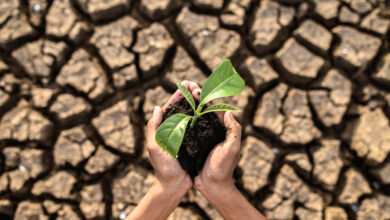Building a Green Home: Sustainable Practices for Everyday Living

Discover eco-conscious building methods, materials, and energy-efficient systems while delving into the benefits, and challenges to build a green home.
In an era where environmental consciousness is paramount, the concept of a green home has gained significant traction. As concerns about climate change and resource depletion grow, individuals are increasingly opting for sustainable practices in every aspect of their lives, including their homes. Building a green home involves adopting eco-friendly measures and utilizing sustainable materials, aiming to minimize the environmental impact and maximize energy efficiency.
Understanding the Foundations of a Green Home
Building a green home begins with mindful planning and design. Integrating eco-friendly elements into the architectural blueprint is crucial. Utilizing passive solar design, where the home’s layout, orientation, and window placement leverage natural sunlight for heating and lighting, reduces the reliance on artificial energy sources.
Insulation plays a pivotal role in energy conservation. Opting for sustainable insulation materials like recycled denim, cellulose, or sheep’s wool not only reduces the home’s carbon footprint but also enhances thermal efficiency, cutting down on energy consumption for heating or cooling.
Sustainable Material Choices
The materials used in construction significantly impact a home’s sustainability. Embracing renewable materials such as bamboo, cork, reclaimed wood, or recycled metal for flooring, walls, and structural components minimizes environmental degradation. Additionally, utilizing low-VOC (Volatile Organic Compounds) paints and finishes ensures indoor air quality, safeguarding the health of occupants while reducing chemical emissions.
Innovative technologies are revolutionizing the construction industry. Materials like structural insulated panels (SIPs) made from renewable resources like foam board insulation sandwiched between plywood or strand board offer superior insulation properties, reducing energy needs for temperature control.
Energy-Efficient Systems and Appliances
Installing energy-efficient systems is fundamental in green home construction. Integrating solar panels or adopting geothermal heating and cooling systems drastically reduces reliance on fossil fuels, curbing greenhouse gas emissions and decreasing utility costs over the long term. Smart thermostats, LED lighting, and energy-efficient appliances further contribute to minimizing energy consumption.
Preserving water is vital due to the rising population that strains our planet’s water reservoirs alongside the occurrence of unprecedented droughts. Conserving water can be achieved by opting for shorter showers, repairing faulty toilets, and selecting appliances that are low-flow and require less water.
Embracing Eco-Friendly Practices

Sustainability extends beyond construction; it encompasses the daily practices of inhabitants. Adopting a green lifestyle involves conscientious choices, such as practicing recycling, composting organic waste, investing in sustainable furniture, putting up planters, and reducing single-use plastics. Encouraging sustainable transportation methods like biking, carpooling, or using electric vehicles aligns with the ethos of a green home.
The Financial and Health Benefits
Building a green home may require an initial investment, but the long-term benefits far outweigh the costs. Energy-efficient designs and appliances lead to substantial savings on utility bills, making it a financially sound decision in the long run. Moreover, a green home promotes a healthier indoor environment, reducing exposure to harmful chemicals and allergens commonly found in traditional homes.
Challenges and Future Trends
While the trend towards sustainable homes is growing, challenges persist. High initial costs, limited availability of sustainable materials, and a lack of widespread awareness are hurdles to mainstream adoption. However, advancements in technology and increased demand are driving innovations, making sustainable options more accessible and affordable.
Looking ahead, the future of green homes is promising. With advancements in sustainable materials, construction techniques, and governmental incentives promoting eco-friendly initiatives, the viability and attractiveness of green homes will continue to rise.
Conclusion
Building a green home is not merely a trend but a responsibility towards the planet and future generations. Embracing sustainable practices in construction and daily living contributes to mitigating climate change, conserving resources, and fostering healthier communities. The journey towards sustainable living begins with individual choices and extends to collective efforts, ultimately creating a greener, more sustainable world — one home at a time.
The Disposal Company is on a mission to transform India’s approach to sustainability, offering an innovative platform that allows brands to go plastic-neutral and carbon-neutral, and make a meaningful impact on the environment. Discover more here.




